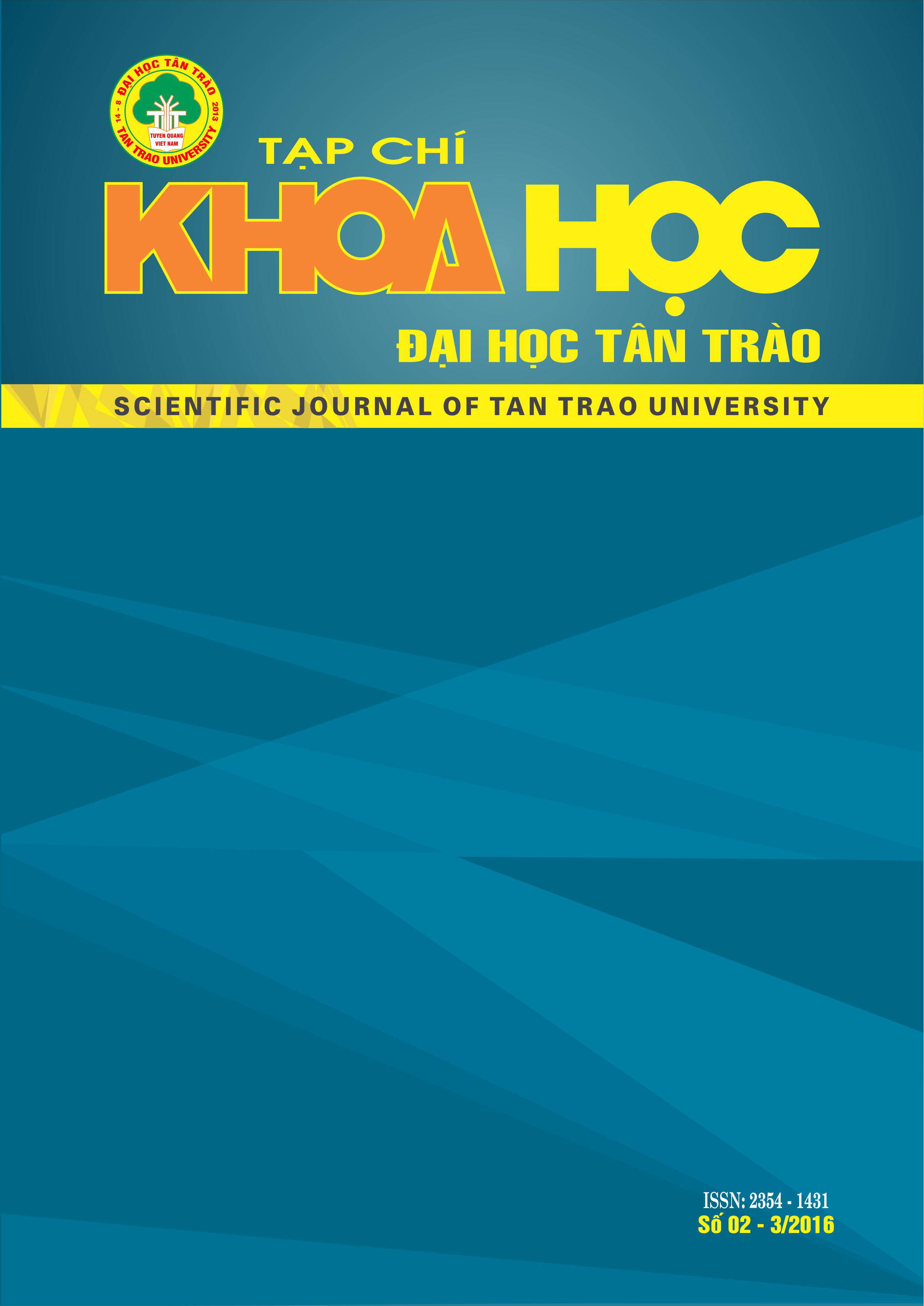Conceptual metaphor “WOMAN IS FOOD” in Vietnamese
DOI:
https://doi.org/10.51453/2354-1431/2016/85Keywords:
cognitive, metaphor, concept, food, female.Abstract
In the light of cognitive linguistics, conceptual metaphor WOMAN IS FOOD in Vietnamese language clearly reflects the thinking and features of Vietnamese culture. Consideration on the source domain, food domain includes sub-domain: name of food, taste of the food, the activities of people with food, thoughts of humans with food. Each sub-domain reflects the rich diversity of Vietnamese on the aspects related to the food of life.
Sources domain food mapped to the target domain of human created conceptual metaphor PEOPLE ARE FOOD, including a group which has female specific characteristics in nature, is set into conceptual metaphor WOMAN IS FOOD. The system of metaphorical concepts includes: Appearance of women is a form of food; Characteristics of women is characteristic of food; Activities for women are operated with food; Women's status is kind of food. Conceptual metaphor clearly demonstrates important role and position of women in lives, consciousness and thought Vietnam national language.
Downloads
References
1. Trần Văn Cơ (2007), Ngôn ngữ học Tri nhận (Ghi chép và suy nghĩ), NXB Khoa học Xã hội, Hà Nội.
2. Trần Văn Cơ (2009), Khảo luận ẩn dụ tri nhận, NXB Lao động Xã hội, Hà Nội.
3. G.Lakoff - M.Johnson (2003), Metaphors we Live by, The University of Chicago Press, London
4. Hoàng Phê (1996), Từ điển tiếng Việt , Nxb Đà Nẵng.
5. Lí Toàn Thắng (2005), Ngôn ngữ học tri nhận: Từ lí thuyết đại cương đến thực tiễn tiếng Việt, Nxb KHXH Hà Nội.
6. Đặng Thị Hảo Tâm (2010), Trường từ vựng - ngữ nghĩa“ món ăn” và ý niệm “con người”, Tạp chí Ngôn ngữ số 5.2010
7. Đinh Phương Thảo (2009), Đặc điểm tri nhận của người Việt qua trường từ vựng “thức ăn”, Luận văn thạc sĩ. Đại học Sư phạm Hà Nội.
8. Nguyễn Đức Tồn (2002), Tìm hiểu đặc trưng văn hoá dân tộc của ngôn ngữ và tư duy ở người Việt - Trong sự so sánh với những dân tộc khác, Nxb Đại học quốc gia Hà Nội.
Downloads
Published
How to Cite
Issue
Section
License

This work is licensed under a Creative Commons Attribution-ShareAlike 4.0 International License.
All articles published in SJTTU are licensed under a Creative Commons Attribution-ShareAlike 4.0 International (CC BY-SA) license. This means anyone is free to copy, transform, or redistribute articles for any lawful purpose in any medium, provided they give appropriate attribution to the original author(s) and SJTTU, link to the license, indicate if changes were made, and redistribute any derivative work under the same license.
Copyright on articles is retained by the respective author(s), without restrictions. A non-exclusive license is granted to SJTTU to publish the article and identify itself as its original publisher, along with the commercial right to include the article in a hardcopy issue for sale to libraries and individuals.
Although the conditions of the CC BY-SA license don't apply to authors (as the copyright holder of your article, you have no restrictions on your rights), by submitting to SJTTU, authors recognize the rights of readers, and must grant any third party the right to use their article to the extent provided by the license.


